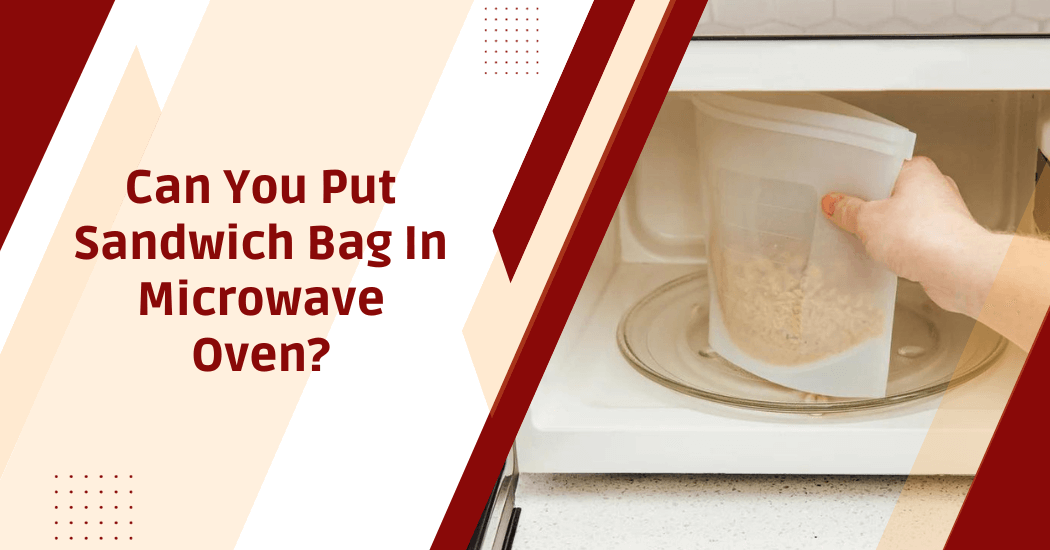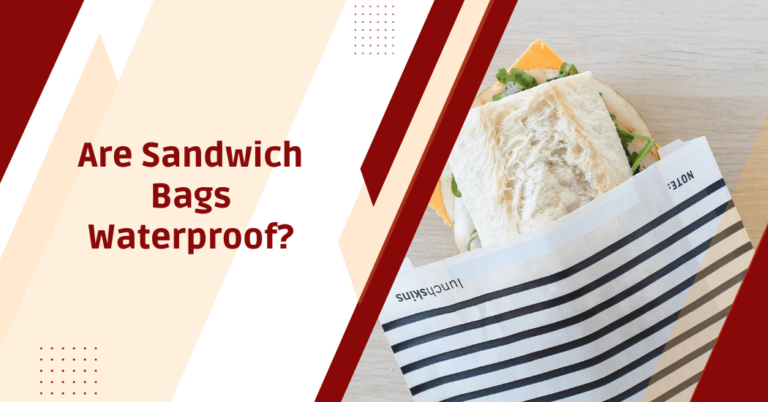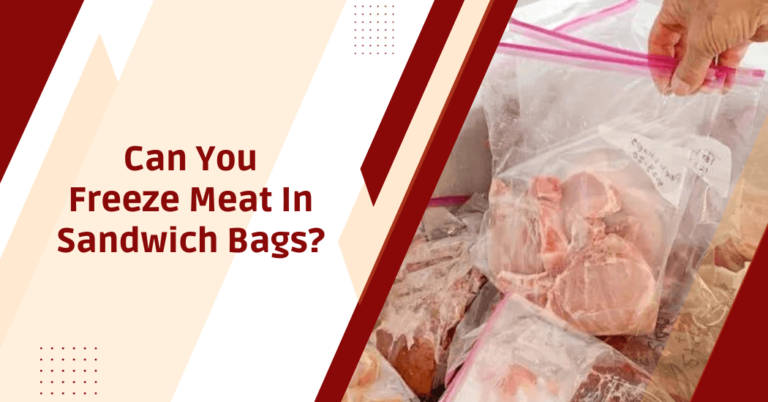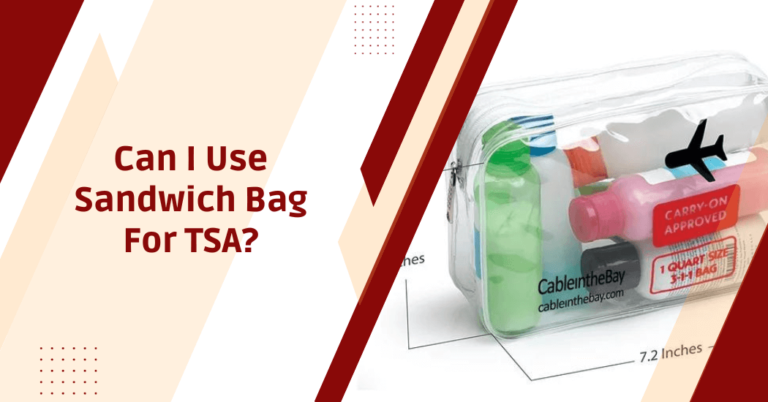Can you put a sandwich bag in the microwave?
The microwave oven has become an indispensable kitchen appliance, offering quick and convenient ways to heat a wide range of foods. It’s the go-to choice for reheating leftovers or defrosting frozen meals, making our busy lives just a little bit easier.
However, while the microwave is celebrated for its efficiency, it’s important to remember that not all containers and materials are safe for use in this high-powered cooking device. One common question that often arises is, “Can you put a sandwich bag in the microwave?”
In this exploration, we will delve into the science and safety behind microwaving sandwich bags. Understanding the potential risks and alternatives can help us make informed decisions when it comes to using the microwave for our culinary needs.
Sandwich Bags In Microwave Oven
It is generally not recommended to put a regular plastic sandwich bag in the microwave. Sandwich bags are typically made of thin plastic and subjecting them to microwave heat can cause the plastic to melt or release harmful chemicals into your food.
If you need to heat food in the microwave, it’s better to use microwave-safe containers or covers made of materials like glass, ceramic or microwave-safe plastics. Always check the packaging of any container or cover to ensure it’s safe for microwave use.
If you’re reheating a sandwich, it’s best to remove it from the bag and place it on a microwave-safe plate or use a microwave-safe cover to prevent the food from drying out or splattering.
Factors to consider while putting a sandwich bag in the microwave
Here are some points to consider before using a sandwich bag in the microwave:
- The type of plastic used in the sandwich bag: As mentioned earlier, not all plastics are safe for use in the microwave. Some may melt or release harmful chemicals when exposed to high temperatures.
- The thickness of the plastic: Thicker plastics may be more resistant to heat and less likely to melt compared to thinner ones. However, it’s still important to check the label and ensure the plastic is microwave-safe.
- The temperature and duration of microwaving: Even if a sandwich bag is made from microwave-safe material, prolonged exposure to high temperatures can still cause it to melt or release chemicals. It’s best to only use the microwave for short periods when heating food in a sandwich bag.
- The type of food being heated: Some foods, such as greasy or fatty items, can cause the plastic to heat up faster and increase the risk of melting or releasing chemicals. It’s important to consider this when deciding whether to use a sandwich bag in the microwave.
- The potential hazards: In addition to the risks of melting or chemical release, there is also a possibility of the bag catching on fire if it touches any hot surfaces within the microwave. This could lead to a larger kitchen fire and potential harm to individuals nearby. It’s important to weigh these potential hazards when considering whether to use a sandwich bag in the microwave.
It’s important to note that even if a sandwich bag is printed as microwave-safe, it’s still recommended to use caution and follow any instructions provided by the manufacturer.
Pros and cons of putting a sandwich bag in the microwave
Pros of putting a sandwich bag in the microwave:
- Convenient and easy heating option for busy individuals.
- Can help save time by eliminating the need to transfer food to a separate container to heat it.
- Can be used for a variety of foods, including sandwiches, leftovers and frozen meals.
- Can help prevent food from drying out or splattering in the microwave.
- Can be a cost-effective option in comparison to purchasing separate microwave-safe containers.
Cons of putting a sandwich bag in the microwave:
- Can be potentially hazardous if the bag is not made from microwave-safe materials or if heated for too long.
- May release harmful chemicals into food, especially if exposed to high temperatures for extended periods.
- Can cause the plastic to melt and potentially damage the microwave.
- May not be suitable for all types of food, especially those with high fat or grease content.
- This may lead to unnecessary waste as sandwich bags are not meant to be reusable.
- Can be a fire hazard if the bag comes into contact with any hot surfaces within the microwave.
Alternatives to using sandwich bags in the microwave
There are a few factors to consider when deciding whether or not to put a sandwich bag in the microwave and in some cases, the potential risks may not be worth it.
Here are some alternatives to consider:
- Use a microwave-safe container: As mentioned earlier, using a container specifically designed for use in the microwave is the safest option when heating food. These containers come in various sizes and shapes, making them suitable for a wide range of foods.
- Cover food with a microwave-safe cover or paper towel: If you’re only heating a small portion of food, consider covering it with a microwave-safe cover or paper towel instead of using a sandwich bag. This can prevent splattering and reduce the risk of the plastic melting.
- Remove food from the sandwich bag before heating: As mentioned earlier, if you’re reheating a sandwich, it’s best to take it out of the bag and place it on a microwave-safe plate or use a microwave-safe cover. This can also help prevent the plastic from melting or releasing chemicals into your food.
- Opt for alternative packaging: If you frequently use sandwich bags to store or transport food, consider investing in reusable and microwave-safe options like glass containers or silicone bags. This not only reduces waste but also eliminates the need to worry about potential hazards when using sandwich bags in the microwave.
FAQ’s – Putting Sandwich Bags in Oven
How can I tell if a sandwich bag is microwave-safe?
It’s best to check the label or packaging of the sandwich bag to ensure it is safe for use in the microwave. Look for phrases like “microwave-safe” or “heat-resistant”.
If you’re unsure, it’s always safer to err on the side of caution and use an alternative method for heating your food.
Can I reheat food in a Ziploc bag in the microwave?
It is not recommended to put a Ziploc bag in the microwave as it may release harmful chemicals or melt. It’s best to use alternative methods for heating food, such as using a microwave-safe container or cover.
However, if you must reheat food in a Ziploc bag, make sure it is labeled as microwave-safe and follow any instructions provided by the manufacturer carefully.
What types of sandwich bags are usually microwave-safe?
Typically, microwave-safe sandwich bags are made from food-grade plastic or silicone, which can withstand the high temperatures generated in a microwave without melting or releasing harmful chemicals.
These bags are often labeled as “microwave-safe” or “heat-resistant” on their packaging. Brands such as Glad and Saran Wrap produce microwave-safe sandwich bags. However, it’s imperative to check the labeling on the packaging for any specific instructions or warnings before use.
Not all sandwich bags are created equal and while some can be safely microwaved, others cannot. Always err on the side of caution and when in doubt, opt for a microwave-safe dish or container instead.
Can I defrost food in a sandwich bag in the microwave?
It is not recommended to defrost food in a sandwich bag in the microwave. This can cause uneven heating. It’s best to use alternative methods for defrosting such as placing the food in a microwave-safe dish and using the defrost setting on your microwave.
Alternatively, you can also place the food in the fridge overnight to thaw it slowly and safely.
Wrap Up
In conclusion, while it’s technically possible to microwave a sandwich bag, it’s not always safe or recommended. The potential risks especially when using bags not labeled as microwave-safe include chemical leaching, melting plastic and even fire hazards.
The best practice is to transfer food into microwave-safe containers or covers before heating. If convenience is a key concern, consider investing in microwave-safe sandwich bags or reusable alternatives. Always prioritize safety over convenience when it comes to using your microwave.





